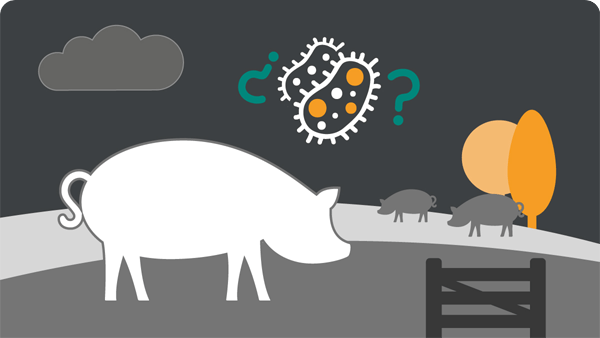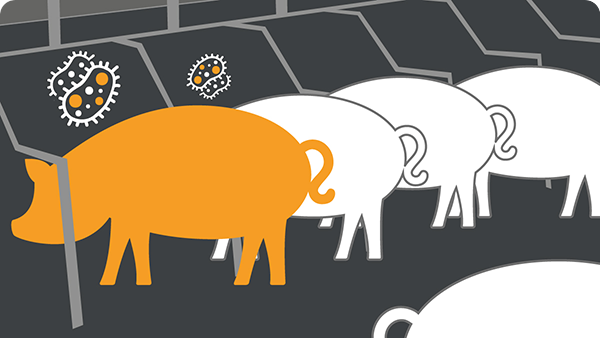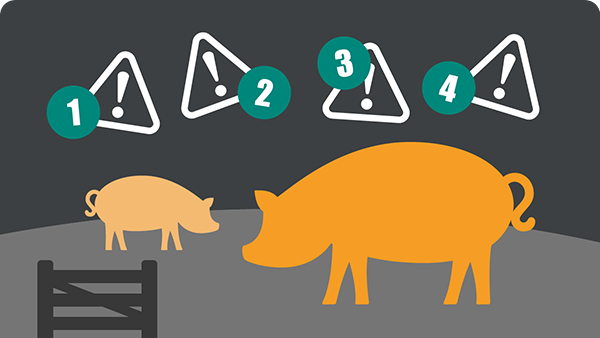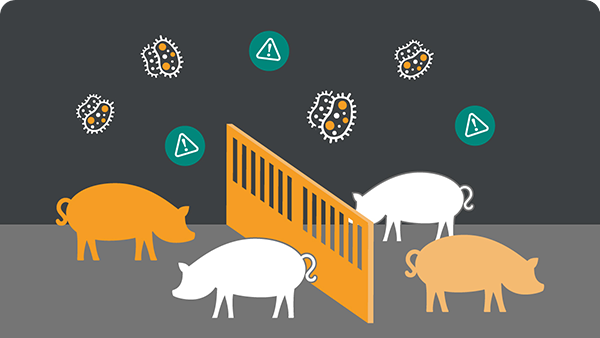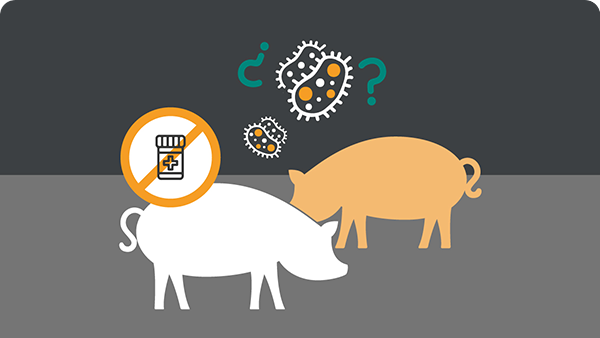
The disease
Clinical signs and forms of ileitis

Clinical signs and forms of ileitis
The forms of presentation of ileitis in pigs are haemorrhagic or acute, chronic and subclinical.
ACUTE FORM
The acute form affects young adults from four to 12 months of age, usually replacement gilts or hogs close to market age. It is characterized by an acute haemorrhagic syndrome with profuse bloody diarrhoea or sudden death (McOrist & Gebhart, 2012).
Black tarry faeces are often seen at the beginning of the clinical presentation, or when the animal is recovering after being affected by a mild case.

The Disease

L. intracellularis is a gram-negative rod with a sigmoid or curved shape and with a single long flagellum.

Contact us
2 Giralda Farms
Madison, NJ 07940 United States
animal-health-communications@merck.com



